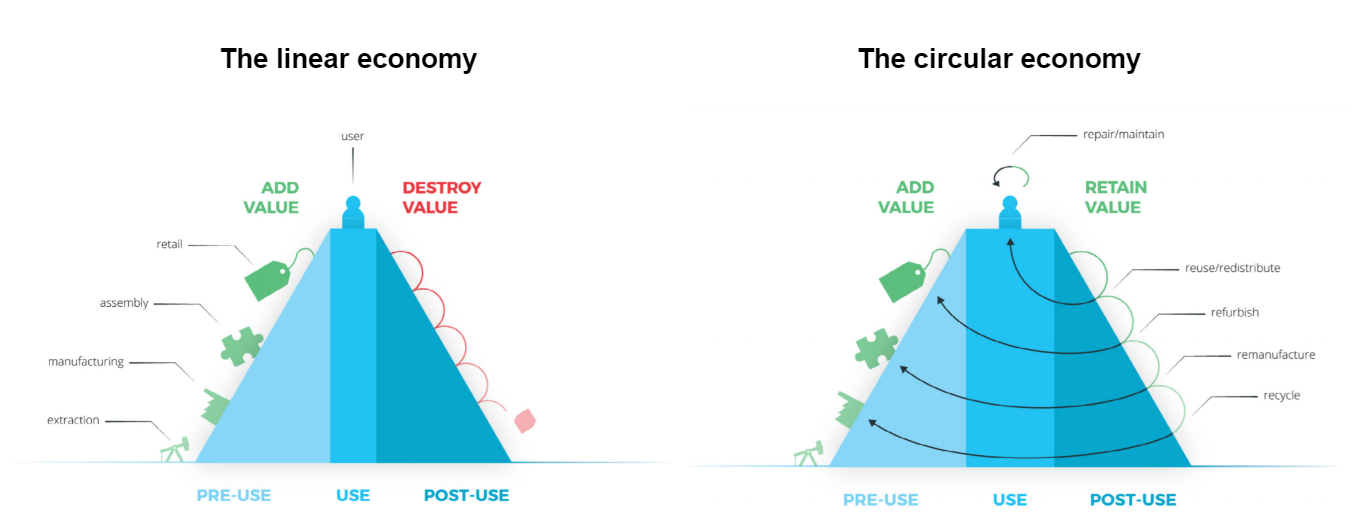On ESGTransformation.com sustainable development is considered a movement directed by the circular economy. This requires a transformation or transition from linear business practices to circular practices.
The aim of the circular economy
The aim of the circular economy is to ensure that economical practices have a stabilising effect on the ecological conditions on earth, while at the same time enabling sound and profitable business. There is a scale to value stabilising effects which ranges from regenerative activities to non-destabilising activities. This scale can be appended to general economic activities that have a significant energy and material footprint.
Economic activities with a high energy and material footprint:
- Agricultural and food production
- Raw material extraction
- Energy production
- Processing of raw materials
- Construction
- Logistics
- High tech industries
These general and basic economic activities can be stabilising or destabilising. It is important to state that all of these industries have best practices along the mentioned scale. At at later stage of the development of this website it will refer to best practices that are available on the web.
For now: Numbers and figures can be found here:
- https://www.eea.europa.eu/en/topics/in-depth/energy (Energy use)
- https://www.eea.europa.eu/en/topics/in-depth/resource-use-and-materials (Resource use and Materials)
The two main concepts of the circular economy
Understanding the circular economy as a way to rebalance exchange with the environment in mutual beneficial ways is a good starting point to reflect on business models. An interesting first concept to explore economical exchange is the term reciprocity. Reciprocity as an anthropological perspective on economy describes the system of giving and taking.
Another interesting concept to explore the circular economy is temporality. In the natural world, in ESG, the E of environment everything is temporary. There is a continuous cycle of composition and decomposition which consumes and produces energy and (raw) materials. Every animal, tree, micro organism is a temporary blob of matter held together by material and energy. When the organism falls apart (decomposes), another will reuse the elements to build upon. This is a balanced reciprocal exchange that keeps life cycling.
The Value Hill model and the R-ladder.
To understand the possibilities of the circular economy for business the Value Hill model gives a lot of insights. In this model the R-ladder is integrated to show how operational activities can stretch or retain the value of a product or the used materials.

The Value Hill (Achterberg, Hinfelaar and Bocken, 2016 - image source)
Circular economy practices are part of the ESG strategy solutions space and will be made available in FEST, the Framework for ESG Strategy and Transformation.
Move to the next chapter of Part 1: The X-curve of transformation
